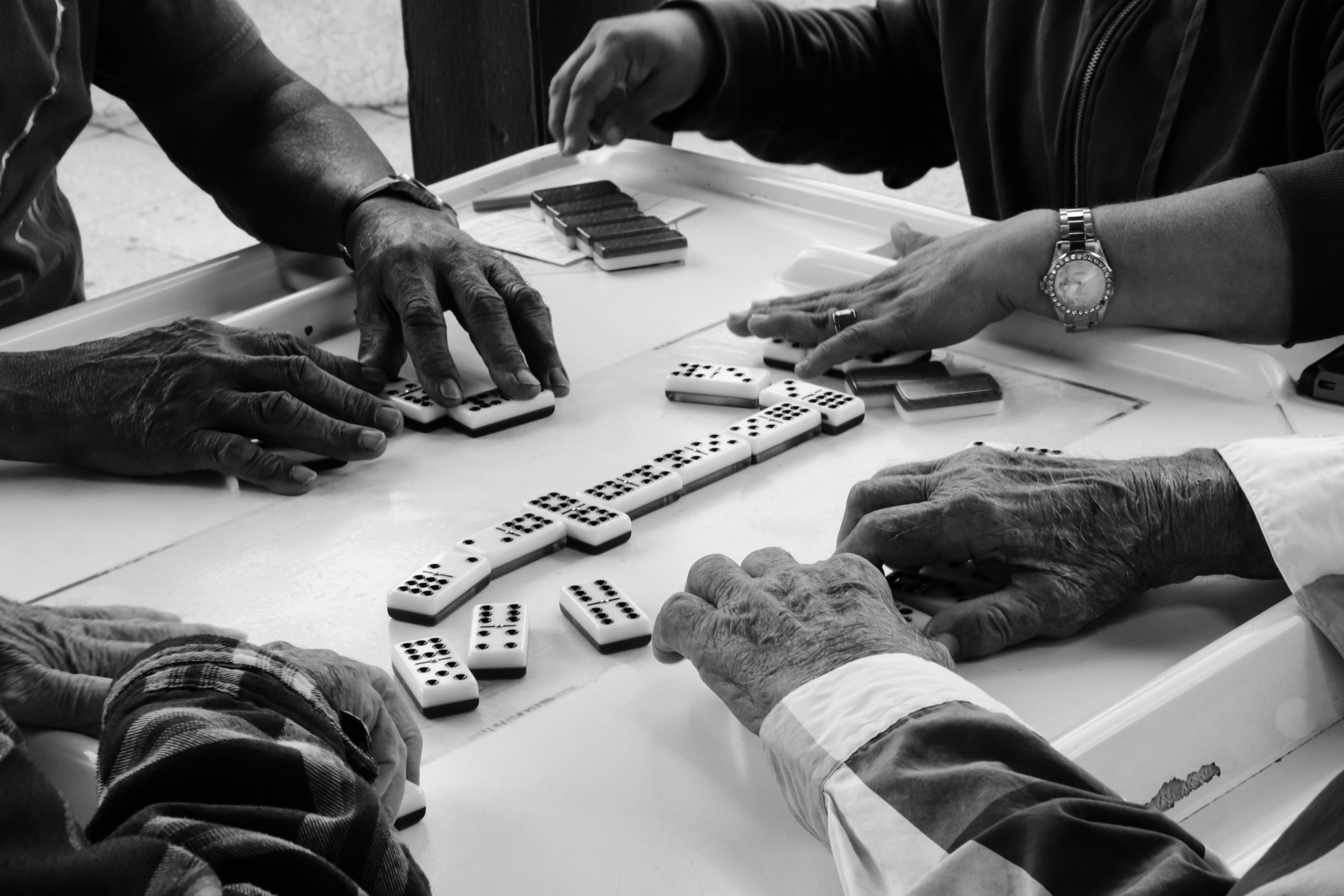
Like it or not, death is a fact of life. Some of us are terrified of that perspective, others don’t think about it all too much, and an even smaller group of us find the idea of eventually becoming obsolete oddly comforting. The scariest thing about it however, is not the mere end of things, but rather the process of them coming to a close. A lot of us will get to live until old age, and pass away in the care of family and hospice workers. For such a difficult process for everyone involved, one would think we would have well understood and implemented ways to make the final goodbye as peaceful as possible – but that unfortunately does not ring true in all cases.
Like it or not, death is a fact of life. Some of us are terrified of that perspective, others don’t think about it all too much, and an even smaller group of us find the idea of eventually becoming obsolete oddly comforting. The scariest thing about it however, is not the mere end of things, but rather the process of them coming to a close. A lot of us will get to live until old age, and pass away in the care of family and hospice workers. For such a difficult process for everyone involved, one would think we would have well understood and implemented ways to make the final goodbye as peaceful as possible – but that unfortunately does not ring true in all cases.

Photo by Pika Ivana Kostanjšek

Photo by Pika Ivana Kostanjšek
Cartlet et al. (2004) describe the common issues of ICU end of life care in the USA, naming issues including communication between nursing staff and patients, insensitive and imprecise terminology, and the variability of standards of care. These can be demoralizing to both the patient and their family, leading to a frustrating and unnecessarily difficult process in a situation that is already not a walk in the park. Furthermore, there are vast issues with the education of nurses, such as a lack of specified training and content on end of life care in undergraduate programs, which lack updated, in-depth knowledge and experience in the delicate skill of caring for the dying (Gillian et al, 2014). The quality of care received also differs depending on the place one receives it – home hospice is rated with a 70.7% satisfaction with care rate from the family, whereas nursing homes fare far worse, at less than 50% (Teno et al, 2004).
We know we have a problem, but how do we make it better?
Once a patient receives a poor prognosis for recovery, we may still give them comfort measures to ease the process. Comfort measures are any proceedings made that focus on easing suffering, rather than directly treating the illness. Inspired by the story of a little girl in an opinion piece by Klemen and Groninger (2018) who was grieving her family member’s death, the sentiment expressed let me remember how my grandfather passed away from cancer when I was 11. When seeing him from the door of the hospital room I was too scared to fully enter, I asked my father if he would get better, to which he softly responded, “They’re doing everything they can to make him comfortable”.
Though the idea of comfort measures is not revolutionary, most places are still lacking in terms of proper implementation. In a study done in a German hospital, a staggering number of nearly 60% ICU patients under their care had no comfort plan established for them (Becker et al, 2004).
The aforementioned article cites the National Institute of Aging’s definition of comfort care, as “care that helps or soothes a person who is dying (…) to prevent or relieve suffering as much as possible and to improve quality of life while respecting the dying person’s wishes.”
But the terminology to describe such care is still widely ambiguous. As Klemen and Groninger (2018) point out in a wonderfully written opinion piece, this can be ambiguous for a good reason – comfort care means something different for every patient and should be tailored to individual needs.
“Humans are not machines, and the experience of a loved one passing away is much more than simply an “inconvenience” – the emotional side of things ought to be considered, too.”
Even though this ambiguity makes establishing a standardized plan for comfort care impractical, this approach has much room to grow. Singer et al (1999) conducted a study on patients with terminal diagnoses and identified five factors that aid in making the process easier for them: adequate pain management, avoiding prolongation of death, achieving sense of control, relieving burden and strengthening relationships with loved ones. While it may seem brutal or unthinkable to their loved ones, avoiding the prolongation of death is crucial in the provision of quality end of life care, and is in tune with acceptance, the fifth stage of dying according to Kübler-Ross (2011). It also allows patients to achieve a sense of control, which is often lacking in the life of a person who receives a terminal diagnosis. A participant from Singer’s study says:
“I wouldn’t want life supports if I’m going to die anyway. There’s no dignity in it. It’s just a guinea pig thing”
It would thus seem that the acceptance of the inevitable death is a cornerstone of providing adequate comfort care – and so it is defined by it. This can be undertaken in a variety of ways – establishing Do-Not-Resuscitate orders (meaning paramedics are legally obliged to not perform CPR on someone who flatlines), discontinuing treatment, or refusing food and water. Refusing medical treatment for their condition in favor of pain management may be a difficult decision, but it allows the person subjected to it able to regain whatever miniscule control there is left, and enjoy the end of their life with their loved ones with dignity.
A terminal diagnosis is also incredibly difficult to bear for the family of the patient, and in order to provide the patient with appropriate end of life care, the family must also be considered. The patient’s wishes often involve solving logical issues concerning their death, such as burial arrangements, but it does not end there. Humans are not machines, and the experience of a loved one passing away is much more than simply an “inconvenience” – the emotional side of things ought to be considered, too. Teno et al. (2004) investigated the perspective of the family and their expectations towards end of life care. They identified several aspects: the importance of supported and shared decision making, coordinated care, and whether the patient’s caregivers provided the desired support to the patient, attended to the emotional needs of the family, and whether they treated the dying person with respect – a simple, yet overlooked factor.
As can be seen, the needs and expectations of family towards end of life care seem to coincide with those of the person dying – and are heavily based on acceptance, communication, and respect.
The discussion on end of life care poses many ethical dilemmas, such as the aforementioned implementation of DNR orders, that deserve their own piece. However, the overarching conclusion from the evidence gathered thus far is that there is no right way to die, only a right way to support those dying. By accepting the inevitable, we can plan ahead. Proactive palliative care intervention, which essentially is proactively making plans on what treatment will be received in all possible scenarios after a terminal diagnosis, allows us to establish comfort care goals to ensure peaceful passing, both for the patient, and their loved ones. (Campbell and Guzman, 2003) (Brinkman-Stoppenlenburg et al., 2014).
Saying goodbye is hard – but everyone deserves to die with dignity, and comfort care accomplishes exactly that. Most importantly, it lets patients be defined in the memory of their loved ones not by their death, but by their colorful life.
References
-
Brinkman-Stoppelenburg, A., Rietjens, JA., van der Heide, A. The effects of advance care planning on end-of-life care: A systematic review. Palliative Medicine. 2014;28(8):1000-1025. doi:10.1177/0269216314526272
-
Becker, G,. Sarhatlic, R., Olschewski, M., Xander, C., Momm, F., Blum, HE., End-of-Life Care in Hospital: Current Practice and Potentials for Improvement, Journal of Pain and Symptom Management, Volume 33, Issue 6, 2007, Pages 711-719, ISSN 0885-3924, https://doi.org/10.1016/j.jpainsymman.2006.09.030.
-
Carlet, J., Thijs, L.G., Antonelli, M., Cassell, J., Cox, P., Hill, N., Hinds, C., Pimentel, JM., Reinhart, K., Thompson, BT., Challenges in end-of-life care in the ICU. Intensive Care Med 30, 770–784 (2004). https://doi.org/10.1007/s00134-004-2241-5
-
Gillan, PC., van der Riet, PJ., Jeong S., End of life care education, past and present: A review of the literature, Nurse Education Today, Volume 34, Issue 3, 2014, Pages 331-342, ISSN 0260-6917, https://doi.org/10.1016/j.nedt.2013.06.009.
-
Kelemen AM, Groninger H. Ambiguity in End-of-Life Care Terminology—What Do We Mean by “Comfort Care?”. JAMA Intern Med. 2018;178(11):1442–1443. doi:10.1001/jamainternmed.2018.4291
-
Kubler-Ross, E. (2011). On Death and Dying: What the Dying Have to Teach Doctors, Nurses, Clergy and Their Own Families (1st ed.). Scribner.
-
National Institute on Aging. Providing comfort at the end of life. https://www.nia.nih.gov/health /providing-comfort-end-life. Accessed 01 nov 2022
-
Singer PA, Martin DK, Kelner M. Quality End-of-Life Care: Patients’ Perspectives. JAMA. 1999;281(2):163–168. doi:10.1001/jama.281.2.163
-
Teno JM, Clarridge BR, Casey V, Welch, LC., Wetle, T., Shield, R., Mor, V., et al. Family Perspectives on End-of-Life Care at the Last Place of Care. JAMA. 2004;291(1):88–93. doi:10.1001/jama.291.1.88
Cartlet et al. (2004) describe the common issues of ICU end of life care in the USA, naming issues including communication between nursing staff and patients, insensitive and imprecise terminology, and the variability of standards of care. These can be demoralizing to both the patient and their family, leading to a frustrating and unnecessarily difficult process in a situation that is already not a walk in the park. Furthermore, there are vast issues with the education of nurses, such as a lack of specified training and content on end of life care in undergraduate programs, which lack updated, in-depth knowledge and experience in the delicate skill of caring for the dying (Gillian et al, 2014). The quality of care received also differs depending on the place one receives it – home hospice is rated with a 70.7% satisfaction with care rate from the family, whereas nursing homes fare far worse, at less than 50% (Teno et al, 2004).
We know we have a problem, but how do we make it better?
Once a patient receives a poor prognosis for recovery, we may still give them comfort measures to ease the process. Comfort measures are any proceedings made that focus on easing suffering, rather than directly treating the illness. Inspired by the story of a little girl in an opinion piece by Klemen and Groninger (2018) who was grieving her family member’s death, the sentiment expressed let me remember how my grandfather passed away from cancer when I was 11. When seeing him from the door of the hospital room I was too scared to fully enter, I asked my father if he would get better, to which he softly responded, “They’re doing everything they can to make him comfortable”.
Though the idea of comfort measures is not revolutionary, most places are still lacking in terms of proper implementation. In a study done in a German hospital, a staggering number of nearly 60% ICU patients under their care had no comfort plan established for them (Becker et al, 2004).
The aforementioned article cites the National Institute of Aging’s definition of comfort care, as “care that helps or soothes a person who is dying (…) to prevent or relieve suffering as much as possible and to improve quality of life while respecting the dying person’s wishes.”
But the terminology to describe such care is still widely ambiguous. As Klemen and Groninger (2018) point out in a wonderfully written opinion piece, this can be ambiguous for a good reason – comfort care means something different for every patient and should be tailored to individual needs.
“Humans are not machines, and the experience of a loved one passing away is much more than simply an “inconvenience” – the emotional side of things ought to be considered, too.”
Even though this ambiguity makes establishing a standardized plan for comfort care impractical, this approach has much room to grow. Singer et al (1999) conducted a study on patients with terminal diagnoses and identified five factors that aid in making the process easier for them: adequate pain management, avoiding prolongation of death, achieving sense of control, relieving burden and strengthening relationships with loved ones. While it may seem brutal or unthinkable to their loved ones, avoiding the prolongation of death is crucial in the provision of quality end of life care, and is in tune with acceptance, the fifth stage of dying according to Kübler-Ross (2011). It also allows patients to achieve a sense of control, which is often lacking in the life of a person who receives a terminal diagnosis. A participant from Singer’s study says:
“I wouldn’t want life supports if I’m going to die anyway. There’s no dignity in it. It’s just a guinea pig thing”
It would thus seem that the acceptance of the inevitable death is a cornerstone of providing adequate comfort care – and so it is defined by it. This can be undertaken in a variety of ways – establishing Do-Not-Resuscitate orders (meaning paramedics are legally obliged to not perform CPR on someone who flatlines), discontinuing treatment, or refusing food and water. Refusing medical treatment for their condition in favor of pain management may be a difficult decision, but it allows the person subjected to it able to regain whatever miniscule control there is left, and enjoy the end of their life with their loved ones with dignity.
A terminal diagnosis is also incredibly difficult to bear for the family of the patient, and in order to provide the patient with appropriate end of life care, the family must also be considered. The patient’s wishes often involve solving logical issues concerning their death, such as burial arrangements, but it does not end there. Humans are not machines, and the experience of a loved one passing away is much more than simply an “inconvenience” – the emotional side of things ought to be considered, too. Teno et al. (2004) investigated the perspective of the family and their expectations towards end of life care. They identified several aspects: the importance of supported and shared decision making, coordinated care, and whether the patient’s caregivers provided the desired support to the patient, attended to the emotional needs of the family, and whether they treated the dying person with respect – a simple, yet overlooked factor.
As can be seen, the needs and expectations of family towards end of life care seem to coincide with those of the person dying – and are heavily based on acceptance, communication, and respect.
The discussion on end of life care poses many ethical dilemmas, such as the aforementioned implementation of DNR orders, that deserve their own piece. However, the overarching conclusion from the evidence gathered thus far is that there is no right way to die, only a right way to support those dying. By accepting the inevitable, we can plan ahead. Proactive palliative care intervention, which essentially is proactively making plans on what treatment will be received in all possible scenarios after a terminal diagnosis, allows us to establish comfort care goals to ensure peaceful passing, both for the patient, and their loved ones. (Campbell and Guzman, 2003) (Brinkman-Stoppenlenburg et al., 2014).
Saying goodbye is hard – but everyone deserves to die with dignity, and comfort care accomplishes exactly that. Most importantly, it lets patients be defined in the memory of their loved ones not by their death, but by their colorful life.
References
-
Brinkman-Stoppelenburg, A., Rietjens, JA., van der Heide, A. The effects of advance care planning on end-of-life care: A systematic review. Palliative Medicine. 2014;28(8):1000-1025. doi:10.1177/0269216314526272
-
Becker, G,. Sarhatlic, R., Olschewski, M., Xander, C., Momm, F., Blum, HE., End-of-Life Care in Hospital: Current Practice and Potentials for Improvement, Journal of Pain and Symptom Management, Volume 33, Issue 6, 2007, Pages 711-719, ISSN 0885-3924, https://doi.org/10.1016/j.jpainsymman.2006.09.030.
-
Carlet, J., Thijs, L.G., Antonelli, M., Cassell, J., Cox, P., Hill, N., Hinds, C., Pimentel, JM., Reinhart, K., Thompson, BT., Challenges in end-of-life care in the ICU. Intensive Care Med 30, 770–784 (2004). https://doi.org/10.1007/s00134-004-2241-5
-
Gillan, PC., van der Riet, PJ., Jeong S., End of life care education, past and present: A review of the literature, Nurse Education Today, Volume 34, Issue 3, 2014, Pages 331-342, ISSN 0260-6917, https://doi.org/10.1016/j.nedt.2013.06.009.
-
Kelemen AM, Groninger H. Ambiguity in End-of-Life Care Terminology—What Do We Mean by “Comfort Care?”. JAMA Intern Med. 2018;178(11):1442–1443. doi:10.1001/jamainternmed.2018.4291
-
Kubler-Ross, E. (2011). On Death and Dying: What the Dying Have to Teach Doctors, Nurses, Clergy and Their Own Families (1st ed.). Scribner.
-
National Institute on Aging. Providing comfort at the end of life. https://www.nia.nih.gov/health /providing-comfort-end-life. Accessed 01 nov 2022
-
Singer PA, Martin DK, Kelner M. Quality End-of-Life Care: Patients’ Perspectives. JAMA. 1999;281(2):163–168. doi:10.1001/jama.281.2.163
-
Teno JM, Clarridge BR, Casey V, Welch, LC., Wetle, T., Shield, R., Mor, V., et al. Family Perspectives on End-of-Life Care at the Last Place of Care. JAMA. 2004;291(1):88–93. doi:10.1001/jama.291.1.88



